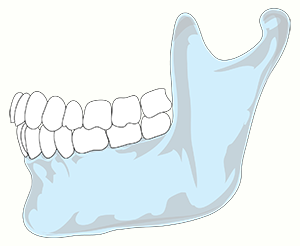What is CMD?
 CMD – cranio mandibular dysfunction is the generic term of functional, psychic, structural and biochemical malfunctions in interaction with teeth, bones, muscles and the temporomandibular joint and other soft parts.
CMD – cranio mandibular dysfunction is the generic term of functional, psychic, structural and biochemical malfunctions in interaction with teeth, bones, muscles and the temporomandibular joint and other soft parts.The term originates from cranium (latin: skull), mandibula (latin; lower jaw) and dysfunction (disfunction) and is called TMD in Anglo-Saxon (temporo lat: temples) mandibular disorder or known as TMJ (temporo-mandibular joint disease – engl.: athropathy.
Other and older terms are:
Myoarthroparty, myofacial pain syndrome, orofacial pain syndrome, dysfunction of chewing apparatus, Costen-syndrome (outdated), pain could be experienced but must not be apparent with CMD.
Epidemiology:
5 to 10 % of the total population is specified as the frequency of CMD.It is controversial how many cases require treatment.
Rarely are CMD symptoms found with toddlers, but frequency increases to the age of puberty.
Similar to other chronic pain disorders, women complain and are clearly treated more frequently then men.
It is not clear, if discomfort will decrease or will be experienced as a habitual effect after menopause.
